This page made August 1999, updat. Aug 2008
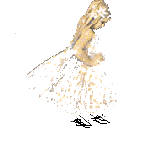
|
The elves are tiny beauties dressed in white, dancing in the moonlight. They live in our Nordic forests or in wells or rivers. If you see rings in the grass contrasting against the surroundings you can think that the elves have had their dances there. We call those rings fairy dances or hexen rings. |
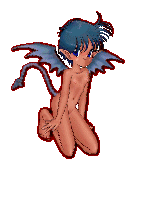 | Alf is mostly seen as a male elf but in Nordic myths they could be both male and female. They were supernatural humanlike beings. There were both good and evil kinds of elves, white elves (pixies, Sw ljusalfer) and dark elves (goblins, Sw svartalfer).
If you were carrying a necklace of silver with a cross or a pentagram you were guarded against the evil beings and the sicknesses they could bring to you. |
| A mermaid was a supernatural beautiful bewitching woman with a fishs tail. The Danish author H.C. Andersen has created her character in the fairy tale Den lille havfrue ("The Little Mermaid"). | |
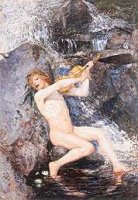
| The Neckan was a supernatural evil being living in streams or watercourses. He could be seen as a man or as a horse. He was sometimes dressed in nice looking costumes but he also could be seen wearing a gray jacket and trousers and a red cap. He tries to entice people going down into the water, and then he takes the drowned. In Swedish folklore he was playing very beautiful on a violin, a horn or a flute. As those tones were so dangerous you had better put your fingers into your ears. His spell could be avoided by steel or prayers. The naked Neckan is a picture which has been spread by the paintings by the Swedish artist Ernst Josephson. |

| The Stream Horse is a being in folklore, a grey or white horse, going around at lakes or streams. He is of the same nature as the Neckan. He did mischief, caused sicknesses and enticed children and women to take a ride and then he sprang into the water with them. |
 | The vitters were the small people, elemental beings looking like small men. They lived under the earth and owned cattle. When settlers were breaking new land they ought to be careful, not to disturb the little ones. You had better be on a friendly footing with them. |
 | The Huldra is one of all the names which are given to the wood-nymph of the Nordic forests. A bewitching beautiful woman. In some areas they said that she had a hollow back, in other that she had a tail which she was very eager to hide for those she met. |
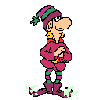 | The dwarves were in Nordic myths small men-like beings, living under the ground or in caves in the mountains. They were wise and cunning and very good blacksmiths. |
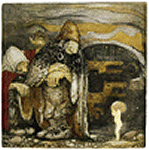
| Troll was a kind of supernatural beings who mainly lived far away from people. Some myths say that they were smaller than man, other that they were very big and clumsy and stupid. They were ugly hairy creatures with big noses and ears, small red eyes and had claws on their fingers instead of nails. They loved gold and silver and jewellery. They lived in families in caves, dens or shacks. Mostly they were evil and hostile and were said to steal brides and not yet christened babies. To avoid the trolls you should show them blank steel or cross theyself. They could not stand the light of the sun or the lightning of thunder. But sometimes they could be helpful to people living solitary. And humans who had helped them would be richly awarded. |
 | The Mountain King could be a troll or a gnome. He had a big court of trolls at his living place in a mountain hall. The giants were big strong menlike beings. They were clumsy and silly, sometimes evil and deceitful. They could not stand the ringing from churchbells and tried to destroy the churches by throwing big stones. They did not like people and they kidnapped women. |
 | A sorcerer is a man with knowledge of magic, a witch normally a woman with supernatural forces.She could perform magic with herbs, decoctions etc, and she could use that in order to help but even in order to hurt. "Wise old women" had knowledge of magic too but mostly used that in curing illnesses. |
 | The hag (Sw "mara") in folklore is a supernatural female being who rode sleeping people and animals and made their sleep anxious. A human soul free from its body during sleeping time. Sometimes this hag shows herself as a cat or a dog. As a cat she came through the keyhole. If you came to the stables in the morning and found your horse perspiring and with a twisty mane, you could think that the hag had been riding in the night. |
| Dragons were giant lizards and they are found in many myths and tales. Sometimes they are guarding treasures. In folklore they were dangerous beings who were spitting fire and poisonous odours and had to be appeased by human offer. And then a hero came a relived them from the best. A dragon was a sign of the ruler, and the vikings had a dragon's head on the rulers ship. | |
 | The "hustomte" (brownie) was a very old man living on a farm and belonging to that special place. He was dressed in grey homespan and wearing a red cap. He is living in the stables or in the larder shed and likes to sit under the house guarding tree. He was eager to patronize the wellbeing of people and cattle. He is an irritable being so you had better to be nice to him and keep peace in the house. He did not like when the people quarreled or when they were not kind to the animals. If so, he could do mischief or even leave the farm and let them live without his helping hands. He had some wishes, for instance to get a nice bowl of porridge at Christmas.
|
If you have some better ideas, please write me! | |